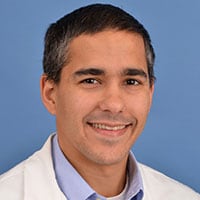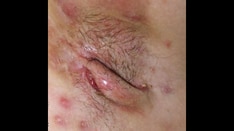Conference MDAngle offers personal perspectives from conference attendees, showcasing their anticipation, quick takeaways, and insights into how the presented research will affect their patients.
The 2025 American Academy of Dermatology Annual Meeting took place in Orlando from March 7 to 11. The conference highlighted the latest advancements in dermatology, including groundbreaking research, emerging therapies, and innovative treatment approaches. Regarding hidradenitis suppurativa, attendees explored late-breaking clinical trial data, new insights into disease management, and specialized sessions on cutting-edge topics such as novel biologics and small-molecule inhibitors in current treatment strategies. Other sessions covered office-based procedures, as well as dermatologic care for diverse populations, such as patients with cancer and other comorbidities.

Christopher J. Sayed, MD
Professor, Department of Dermatology, University of North Carolina, Chapel Hill
"One of the biggest take-homes is that we're really moving into this era of more personalized care for patients where we're thinking through more complicated scenarios than just the random patient with HS that walks into the clinic.”
Preconference Considerations
AAD 2025: Previewing Updates in Hidradenitis Suppurativa
Dr Sayed looks forward to exciting updates on hidradenitis suppurativa (HS), including new data on IL-17 inhibitors, JAK inhibitors, and novel mechanisms. Additionally, sessions will cover special populations and office-based procedures. Discussions on HS genetics will also highlight advancements in understanding the underlying inflammatory processes that drive the condition.
Quick Clinical Takeaways
AAD 2025: New Excitement Around Hidradenitis Suppurativa
Dr Sayed reports on how AAD 2025 generated excitement around hidradenitis suppurativa (HS), featuring sessions on special populations, treatment updates, and office-based procedures such as cryoinsufflation. GLP-1 receptor agonists sparked mixed reactions regarding their role in treating HS, with more research needed to determine their effectiveness. A major highlight was the promising 2-year bimekizumab data, offering hope for improved treatment options for HS patients.
How Will My Patients Benefit?
Applying Key Lessons on HS From AAD 2025 to the Clinic
Reflecting on the AAD meeting, Dr. Sayed highlights the importance of personalized care in managing HS, particularly for certain populations such as pregnant patients and those with chronic infections. Sessions on office-based procedures, including lasers and deroofing, underscored the need to expand these treatments to a wider audience for more effective patient care. Looking ahead, advancements in biologics, emerging treatments such as nanobodies, and procedural innovations hold promise for improving HS management and addressing diverse patient needs.
Polling Question
Summary
HS remains a major focus of research and innovation in dermatology, as highlighted at the 2025 AAD Annual Meeting in Orlando. Dr Sayed found the meeting to be an exciting platform for advancements in HS, noting the growing emphasis on personalized care, particularly for populations such as pregnant patients and those with chronic infections. Discussions on GLP-1 agonists sparked debate, while promising 2-year data on biologics offered hope for improved treatment options. Dr Sayed also stressed the importance of expanding office-based procedures and exploring emerging therapies like nanobodies to enhance HS management.












